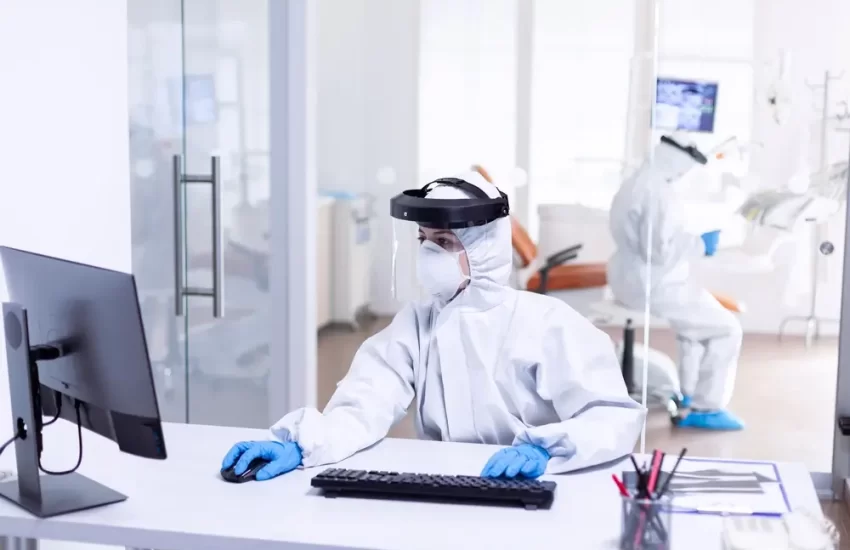The healthcare industry is currently undergoing an unprecedented transformation, primarily driven by the integration of robotics and automation. This article delves into how robotics is reshaping healthcare across various domains, from surgical robots that enhance precision to patient care assistants that improve the overall healthcare experience.
The Robotic Revolution in Healthcare
A Paradigm Shift
The integration of robotics into healthcare represents nothing short of a paradigm shift in the industry. It’s a transformation that goes beyond incremental improvements and instead reimagines the very nature of healthcare delivery. With robotics, we are witnessing the evolution of a new era where technology and human expertise collaborate seamlessly to enhance patient care.
This paradigm shift is characterized by the empowerment of medical professionals, who now have at their disposal robotic allies capable of remarkable precision and tireless assistance. Whether in the operating room, diagnostic imaging, or rehabilitation, robots are not replacing human practitioners; rather, they are augmenting their abilities, reducing the margin for error, and ultimately leading to better patient outcomes. This shift towards robotics-driven healthcare is underpinned by versatility, adaptability, and the promise of expanding access to high-quality care, transcending geographical boundaries, and improving the overall healthcare experience for all.
Versatile Applications
Robotics in healthcare is remarkably versatile, touching multiple facets of the industry. Its influence extends from the sterile environment of the operating room to rehabilitation centers, and even into patients’ homes. This adaptability underscores its potential to revolutionize healthcare delivery on a broad scale.
Surgical Robots: Precision Beyond Human
Robotic Surgeons
One of the most striking advancements in healthcare robotics is the emergence of robotic surgical systems, exemplified by the da Vinci Surgical System. These robotic surgeons provide unparalleled precision and control to human surgeons. With 3D visualization and enhanced dexterity, they enable procedures with smaller incisions, reduced pain, and quicker recovery times.
Telesurgery
Robotic telesurgery is breaking down geographical barriers in healthcare. Surgeons can now operate on patients from remote locations, transcending the limitations of distance and ensuring that expert surgical care is accessible to even the most remote and underserved areas.
Training and Simulation
Robotic platforms are valuable not only in the operating room but also in the training and simulation environment. Surgeons can hone their skills using realistic simulations without putting patients at risk. This approach to training enhances the quality of care and ensures that surgical skills are consistently at their best.
Automation in Diagnostics and Imaging
Radiology Assistants
The integration of artificial intelligence (AI) and robotics has given rise to radiology assistants. These AI-driven robotic systems support radiologists in the analysis of medical images. They expedite the diagnostic process, improve the accuracy of anomaly detection, and contribute to early disease diagnosis.
Pathology Robots
Pathology robots are transforming the way tissue samples are processed and analyzed. These robots work tirelessly, providing pathologists with precise and rapid results. As a result, diagnoses are made more accurately and efficiently, benefiting patient care.
Rehabilitation and Physical Therapy
Robotic Exoskeletons
Robotic exoskeletons are assisting patients with mobility impairments in regaining their independence. These wearable devices facilitate controlled movements, enabling patients to regain strength and mobility with support and guidance.
Physical Therapy Aids
In the realm of physical therapy, robots are playing a significant role in providing consistent and targeted rehabilitation exercises. These aids ensure that patients receive optimal care and allow healthcare professionals to closely track progress, leading to more effective rehabilitation.
Patient Care and Assistance
Service Robots
Service robots are becoming indispensable in healthcare settings. They handle routine tasks such as medication delivery, transporting supplies, and sanitizing rooms. By reducing the workload of healthcare staff, they enhance efficiency and minimize human error.
Companion Robots
Companion robots are addressing the emotional needs of patients, particularly in long-term care settings. These robots provide companionship and emotional support, alleviating feelings of isolation and loneliness among patients.
Challenges and Considerations
Ethical and Regulatory Issues
The integration of robotics in healthcare presents ethical and regulatory challenges. Questions related to liability, patient privacy, and the potential dehumanization of patient care need to be carefully addressed as these technologies become more prevalent.
Cost and Accessibility
While the benefits of healthcare robotics are clear, cost remains a significant barrier to accessibility. High acquisition and maintenance costs can limit the adoption of these technologies, particularly in smaller healthcare facilities and underserved regions.
Conclusion
The integration of robotics into healthcare is reshaping the industry in profound ways. From enhancing surgical precision and diagnostic accuracy to aiding rehabilitation and improving patient care, robotics is revolutionizing the entire healthcare ecosystem. While ethical, regulatory, and cost challenges persist, the potential for improved patient outcomes, reduced recovery times, and enhanced quality of care is undeniable. As technology continues to advance, we can anticipate even more innovative applications of robotics that will further elevate the standards of healthcare worldwide.
